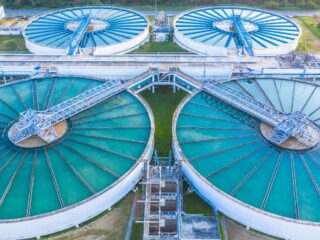
Landscaping irrigation is more than just watering your garden; it’s a blend of art and science. Getting it right means your green spaces can flourish, and water our precious resource is conserved.
However, when not managed properly, it can lead to a host of problems. This post will guide you through common pitfalls to avoid in landscaping irrigation, ensuring your garden remains a vibrant oasis without wasting water. Ready to dive in? Let’s go!
Understanding Your Landscape Design
The secret to successful garden watering lies in understanding your landscape design. Every garden is unique, with various plants that have different hydration needs. The layout of your garden, the local climate, and the type of soil all play crucial roles in determining the most effective irrigation strategy.
Plan Before You Plant
Crafting the ideal landscaping irrigation plan begins with your garden’s design. Consider your plant types and their positions.

Are there plants that prefer more shade and moisture, like ferns? Or those who love the sun and require less water, such as succulents? Grouping plants with similar water needs together can make your watering efforts more efficient and easier to manage.
Selecting the Right Sprinkler System
An essential component of landscaping irrigation is choosing the right sprinkler system. Overhead sprinklers, drip systems, and soaker hoses each serve different purposes.
For broad areas, overhead systems are convenient, but they can be less efficient due to evaporation or wind. Drip systems target the roots directly and can save water, but they may not be practical for large lawns. Look for systems that can be adjusted as the seasons change and your garden grows.
Regular Maintenance Checks
Irrigation systems need love and care, too. A leak or a broken head can result in over-watering or under-watering your plants.
Regular maintenance checks can catch these issues early. Professionals like AZ Irrigation and Maintenance can be helpful partners in ensuring your irrigation system stays in top condition. An annual check-up can go a long way in avoiding the hassle of emergency repairs.
Water Conservation
Water conservation should be a key goal in any irrigation system. A well-maintained system can reduce water waste substantially.
Timers can automate watering schedules, ensuring plants get hydrated during the cooler parts of the day to minimize evaporation. Rain sensors can prevent unnecessary watering by shutting off the system during rainfall. Every drop counts, so calibrating your system to avoid overwatering is vital.
Mind the Weather
Always pay attention to the weather forecasts. Do the skies look cloudy? Hold off on the watering and let nature do the work.
Frequent rains can saturate the soil, so adjust your watering schedule to avoid drowning your plants. On the flip side, during prolonged dry spells, your landscape may need extra TLC to stay quenched.
Mulching and Soil Care
Mulch isn’t just a pretty dressing for your garden; it’s a moisture-preserving superhero. Mulch helps retain water, reducing the frequency of irrigation needed.
It also keeps the weeds at bay, which compete with your plants for water. Pair this with soil care that encourages water absorption, like aeration.
Using Landscaping Irrigation Wisely
Properly managing landscaping irrigation can prevent headaches and waste. Understand your garden’s needs, choose the right watering system, and perform regular maintenance for a healthy landscape.

Create an irrigation plan that works with your landscape design and the environment by following these tips. Balancing your garden’s needs with environmental stewardship ensures successful irrigation maintenance. Make smart choices for a sustainable, verdant world. Happy gardening!
Did you like this guide? Great! Browse our website for more!





